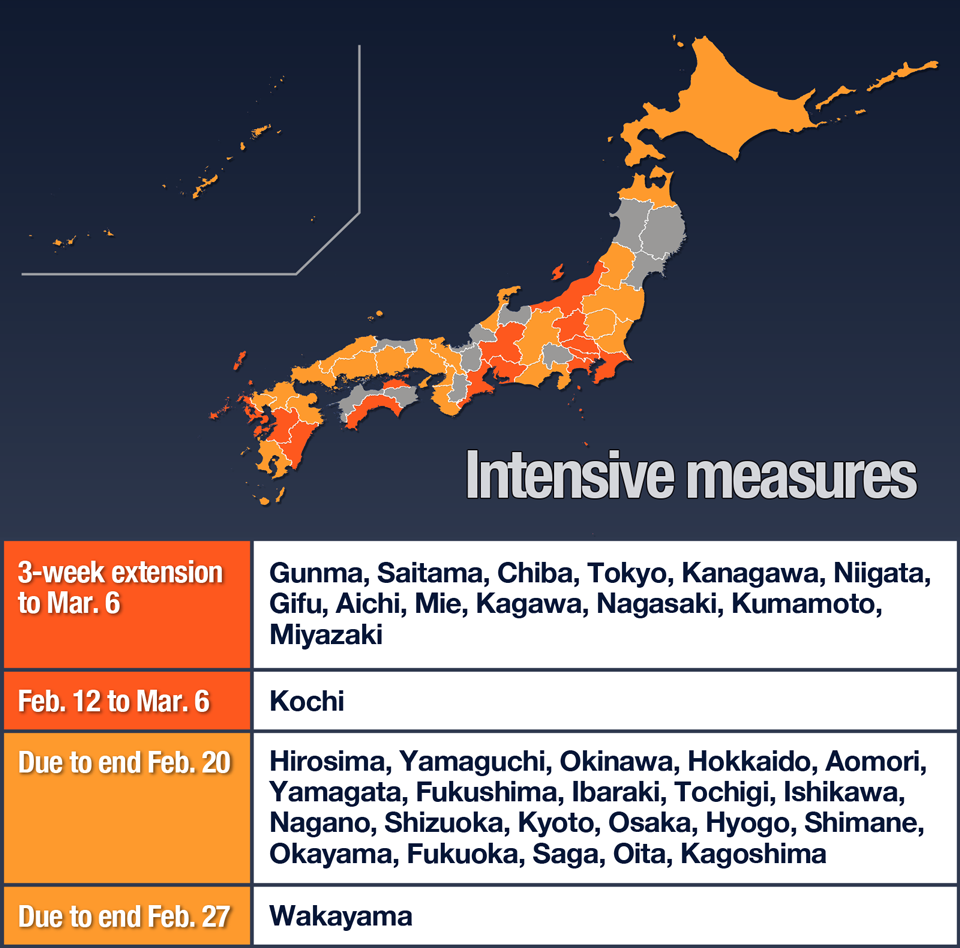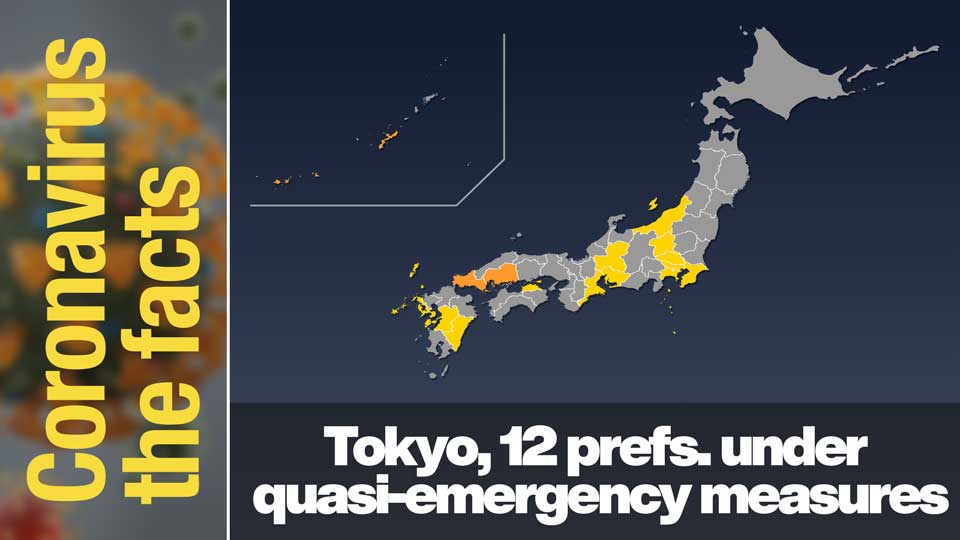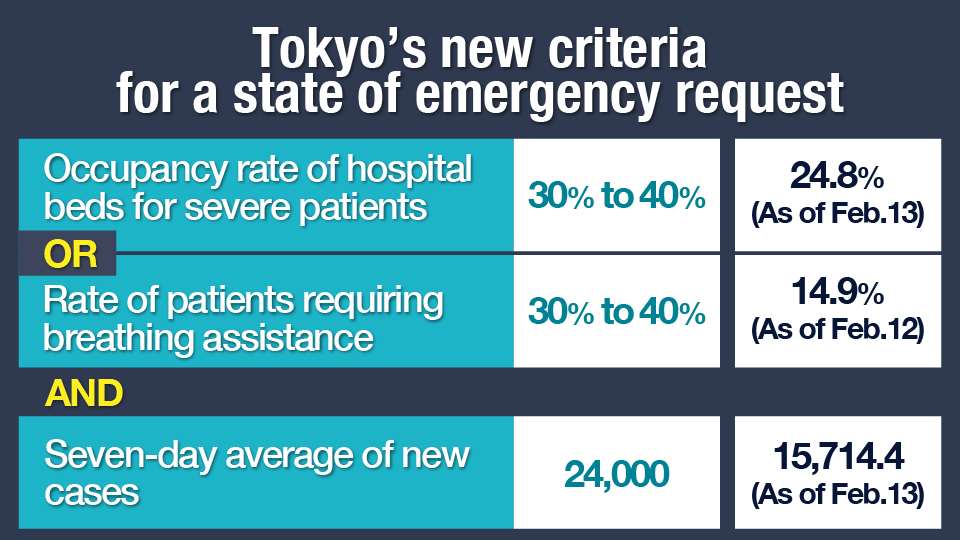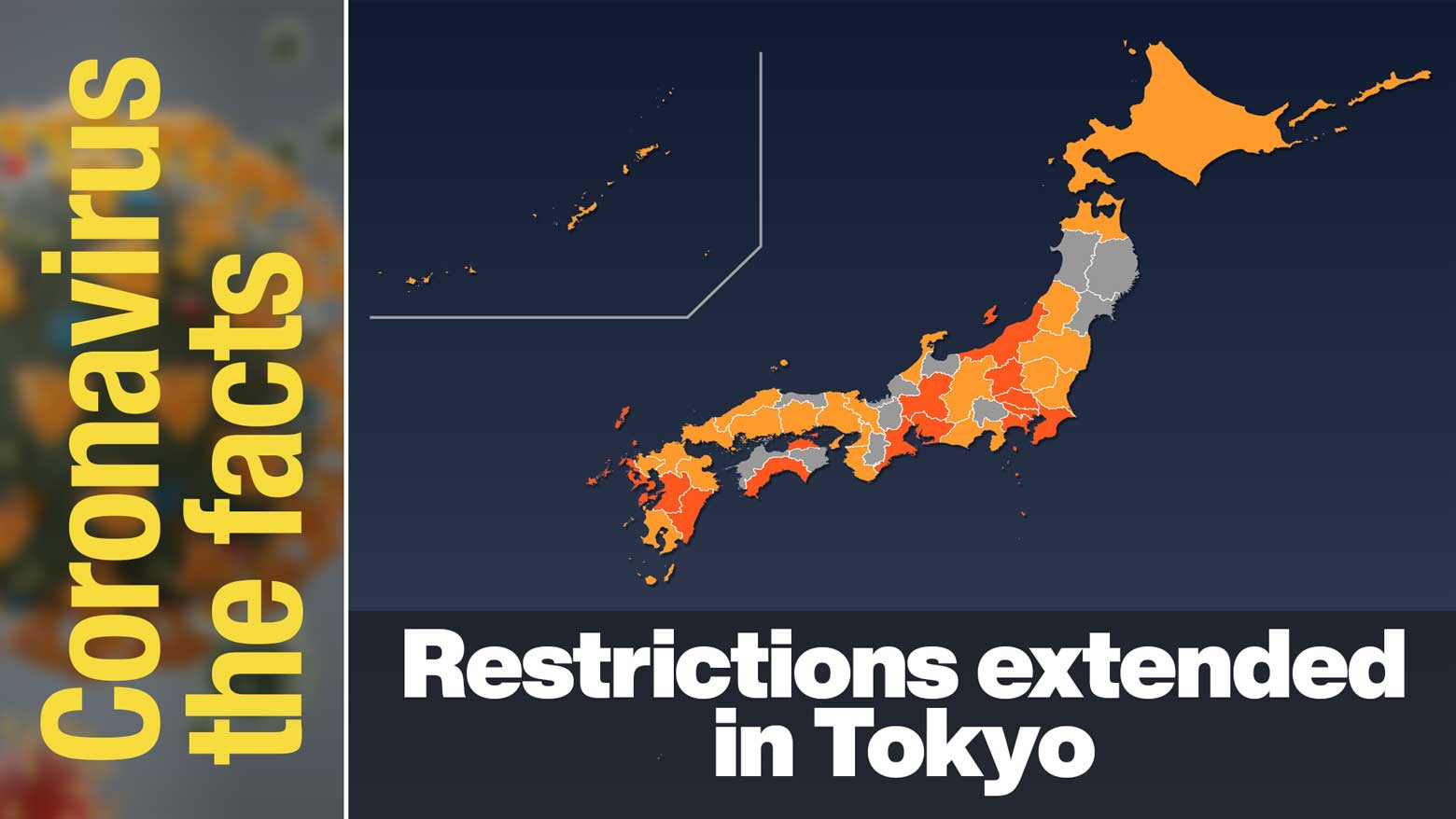This is our series on key coronavirus-related information. Click here to read other installments: #Coronavirus the facts. Find the latest information and answers from experts on everything COVID-19.
Case numbers remain high
Japan's government has extended what it calls "quasi-emergency measures" by three weeks for Tokyo and 12 prefectures. The restrictions were initially planned to expire on February 13, but are now in place through March 6.
Infections remain high, particularly among older people and children. Hospital bed occupancy rates for moderate and seriously ill coronavirus patients continue to rise, and the number of deaths is also increasing. The take-up of booster shots among older people is low.
Prime Minister Kishida Fumio said last week that the spread of infections has begun to slow, thanks to the public's cooperation. He says the measures taken so far appear to be working, to an extent. But, he says experts are highlighting the risk of serious illness later on.
Kishida is also urging caution. He says a surging infection rate can harm the economy and society as a whole.
Areas where restrictions are in effect

Areas subject to the three-week extension are: Gunma, Saitama, Chiba, Tokyo, Kanagawa, Niigata, Gifu, Aichi, Mie, Kagawa, Nagasaki, Kumamoto and Miyazaki.
Kochi prefecture has been newly added to the list of localities where restrictions are in place. The period is February 12 to March 6.
Measures in Hiroshima, Yamaguchi, and Okinawa started on January 9 and were expected to expire on January 31. They have already been extended to February 20, the same as Osaka and 17 other prefectures. Wakayama has been added with restrictions due to end February 27. A total of 36 of Japan's 47 prefectures are affected.

Click here to learn more about the measures in Tokyo and 12 prefectures.
Tokyo alters its state of emergency criteria
The Tokyo Metropolitan Government issued new criteria this month for requesting a state of emergency, in line with the characteristics of the Omicron variant. The current quasi-emergency measures are a preliminary step towards a state of emergency.
Tokyo officials will ask the central government to issue a state of emergency for the capital if the occupancy rate for severely ill patients reaches 30% to 40%, or the same percentage of patients require breathing assistance, and when the seven-day average of new cases reaches 24,000.

Kochi and Wakayama
Kochi
Restrictions are in place across the entire prefecture
https://www.pref.kochi.lg.jp/top.html
Wakayama
Restrictions are in place across the entire prefecture
https://www.pref.wakayama.lg.jp/prefg/011900/d00209535.html
This information is accurate as of February 14, 2022.
